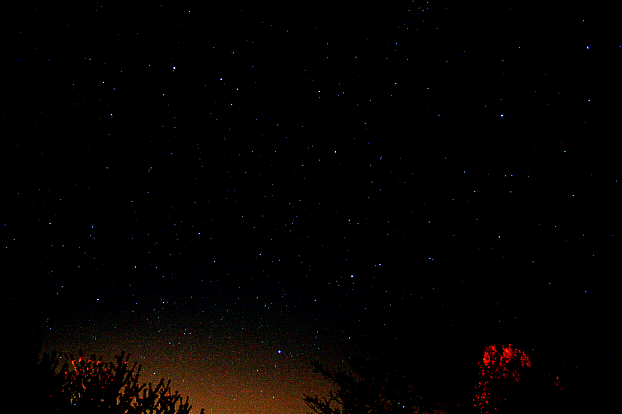

Erigone was the daughter of Boötes and I recount their story on his page. She committed suicide when her father was murdered and Dionysos immortalised her in the stars as Virgo.
As the only female figure in the zodiac, Virgo has been associated with most of the important deities from Egyptian, Greek, and Roman myths—Ishtar, Innana, Aphrodite, Ceres, Demeter, Astraea, Erigone, Isis, and even Mary from Christian tradition. In particular, Dementer (Ceres to the Romans) was the Greek goddess of corn and Virgo is often depicted with an ear of corn in her right hand. Astraea was the Roman goddess of justice and Virgo is sometimes depicted as having the scales of Libra in one hand.

|
There are few stars of note in Virgo. Spica (α) is an eclipsing binary but with a very small change of magnitude (0.91 to 1.01). It lies near enough to the ecliptic to be occulted by the Moon or a planet. It is very low in my sky at this time of the year. Porrima (γ) is another binary of identical components. However the orbit is almost edge on to us and, in 2007, the separation reached its minimum at 0.3 arc-seconds. It is increasing again but with an orbital period of 169 years it will be a while before the separation reaches its maximum. The only variable worthy of note is W-Virginis. Its magnitude varies from 9.5 to 10.6 with a period of 17.3 days and was once thought to be a Cepheid, but it is now realised that it represents a different class of variables now known as W-Virginis variables. I have indicated its approximate position. I have decided not to put the names of the stars in Virgo on the picture as I think this makes it too cluttered, so I list them below. But I include Denebola (β-Leonis) and Arcturus (α-Boötes) because, along with Spica (α-Virginis), they help to identify the constellation. |
Virgo gives its name to the Virgo cluster of galaxies, which straddles the boundaries of Virgo and Coma Berenices. Star maps generally show about 60 galaxies in this area of the sky but many of them are small and faint. There are 14 Messier objects, all of them galaxies, in addition to the two I indicate specifically on my picture. The Virgo cluster is one of about 100 such clusters in the Virgo super cluster which includes the Milky Way and the rest of the Local Group.
Saturn, of course, was just visiting this year but will remain in Virgo until December 2012.
The picture above was taken at 01:22 UT on 7 April 2011 with my Cannon 1000D and is a single, 30-second exposure at f/4, ISO 1600 and a focal length of 18 mm. The sky glow near the horizon is particularly bad and I was unable to remove all of it without losing many of the fainter stars. Parts of the trees are seen illuminated by a street lamp. M104 is hidden by another tree which appears to have missed the worst of the street lighting, but the picture illustrates why I may never get a picture of M104.
The major stars and their names.
| Bayer letter | Name | Magnitude |
| α | Spica | 0.98 |
| β | Zavija | 3.61 |
| γ | Porrima, Arich, or Postvarta | 3.65 |
| δ | Auva | 3.38 |
| ε | Vindemiatrix | 2.83 |
| ζ | Heze | 3.37 |
| η | Zaniah | 3.89 |
| ι | Syrma | 4.08 |
| μ | Rijl al Awwa | 3.88 |